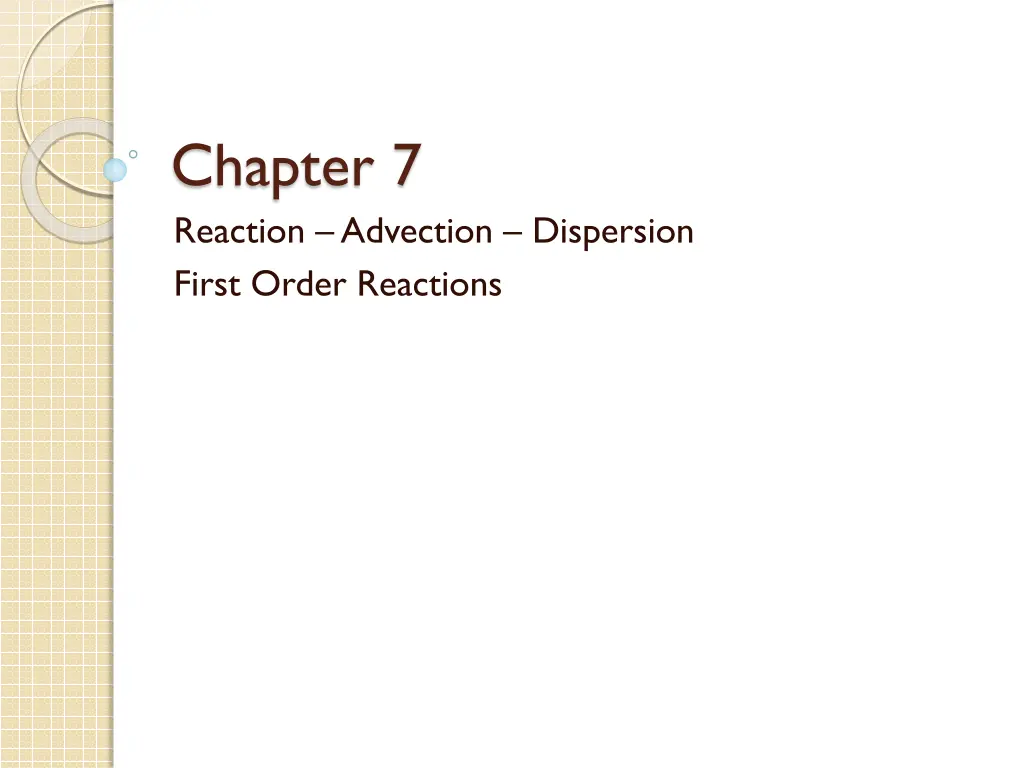
Reaction Advection Dispersion First Order Reactions
Explore the concepts of reaction advection dispersion and first-order reactions in environmental systems, including degradation reactions, Fourier transforms, random walks, and steady-state plumes. Understand the challenges and solutions in solving these complex systems numerically and analytically.
Uploaded on | 0 Views
Download Presentation

Please find below an Image/Link to download the presentation.
The content on the website is provided AS IS for your information and personal use only. It may not be sold, licensed, or shared on other websites without obtaining consent from the author. If you encounter any issues during the download, it is possible that the publisher has removed the file from their server.
You are allowed to download the files provided on this website for personal or commercial use, subject to the condition that they are used lawfully. All files are the property of their respective owners.
The content on the website is provided AS IS for your information and personal use only. It may not be sold, licensed, or shared on other websites without obtaining consent from the author.
E N D
Presentation Transcript
Chapter 7 Reaction Advection Dispersion First Order Reactions
First Order Degradation Reactions Advection-Dispersion Equation with degradation Or in 1d Guess what use Fourier transforms to study infinite domain solution
In Fourier space Same as conservative Therefore, in real space Greens Function?? Random Walks?
Random Walks Update position in space and time as before But now, during a time step a particle can die with Probability Is this consistent say if =0 How to implement numerically?
Steady State Plumes One of the interesting features of degrading systems is that they allow for steady state plumes (that is the system can reach a point where you are putting in the same as is dying at a given time) Steady State We have a continuous source of concentration C0 being released from x=0 that advects, disperses and degrades as it moves downstream (sound familiar to anyone Arial?) How to solve (can t formally use Fourier on semi-infinite domain)
Lets start easy set D=0 How to solve?
Lets start easy set D=0 Integrate and impose BC at x=0 What does this mean and does it make sense to you?
Ok now other extreme v=0 How to solve now? Can t just integrate as we did before, but look at the equation carefully. What function when you differentiate it twice comes back with the same structure? Also 2nd order ODE which means two solutions
Ok now other extreme v=0 Find A1 and A2 from boundary conditions use your physical reasoning also
Now keep v and D Now what? Use what you learned from both cases above to look for an appropriate solution here i.e. use the solutions to guess an appropriate solution structure
Now keep v and D Assume and substitute into ODE What is ? Solve the quadratic
Now keep v and D Assume and substitute into ODE Again, use BCs to fix A1 and A2
By the way How might you know when you can neglect diffusion and when you can neglect advection?

